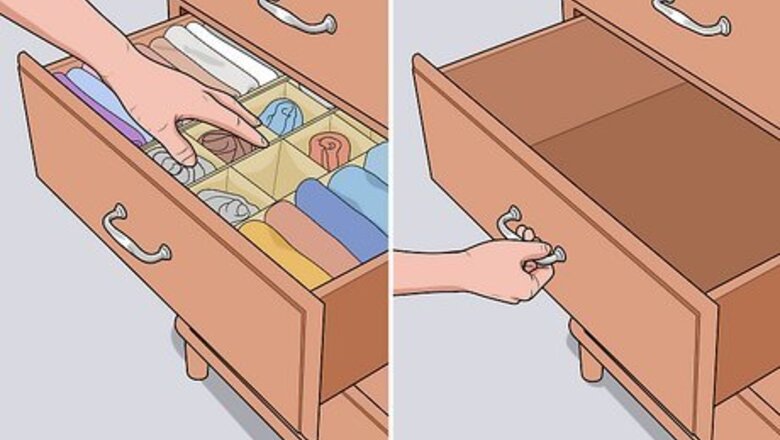
views
- Remove the existing drawer and measure the length of the cabinet to determine what size drawer slide to buy.
- Screw the soft-close drawer slides to the interior of the cabinet using a power drill.
- Insert the drawer in the cabinet and screw the slides to the sides of the drawer.
Measuring for the Slides
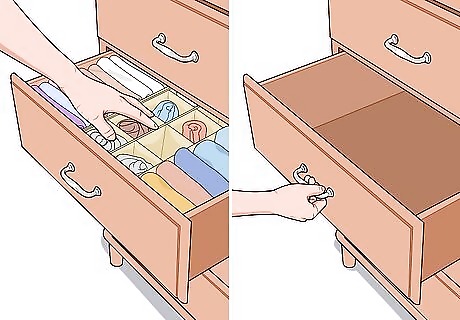
Empty and remove the drawer. Pull the drawer all the way out of the cabinet to remove the drawer and set it aside. If you can't easily pull the drawer out of the cabinet, you may need to press down on small metal latches at the back of the drawer slide. The latches are set near the back end of the metal drawer slides, so pull the drawer out as far as possible in order to access them.
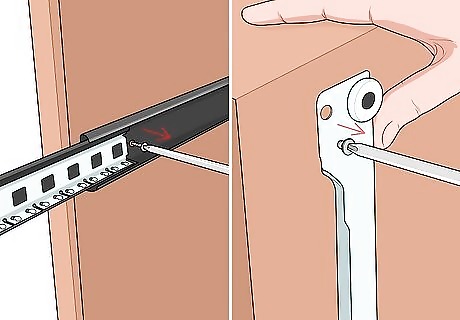
Unscrew and remove the existing hardware from the drawer and cabinet. Take a screwdriver or power drill and unscrew the slides from both sides of the drawer. Then, remove the brackets on the sides of the cabinet where the slides fit into. Sometimes, slides are mounted underneath the drawer, so check there if your drawer doesn't have side-mounted slides. You may need to press down clips located on the slide tracks to unlock them. These will come off when you unscrew the slides.
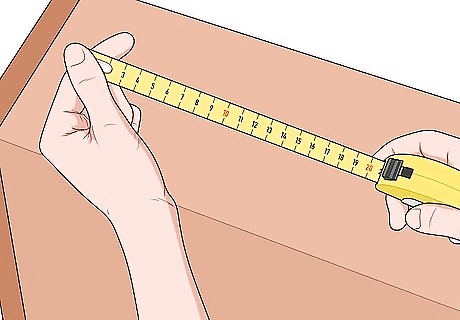
Measure the cabinet or drawer length with a tape measure. You can buy slides that are 10 to 28 inches (25 to 71 cm) long, so it's important to find the exact length for your drawer. Measure the distance from the front edge of the cabinet to the inside of the cabinet back and subtract 1 in (2.5 cm) to find your slide measurement. For an under-mount slide, measure the length of the drawer and use that measurement for your slide.
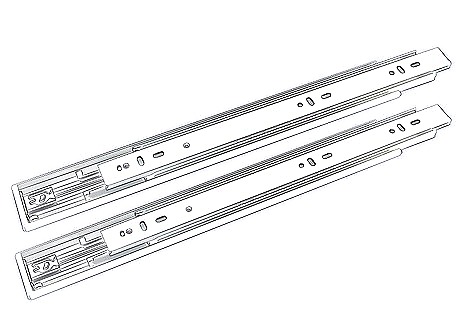
Purchase soft-close drawer slides. After you know what size slide to get, there are other things to consider—decide how far you want the slides to extend the drawer when it's open, and ask yourself how much weight you need the drawers to support. You also have options when it comes to the color of the slides. Some slides offer special motion features like automatic self-close or opening with a simple push.
Setting up the Slide Tracks
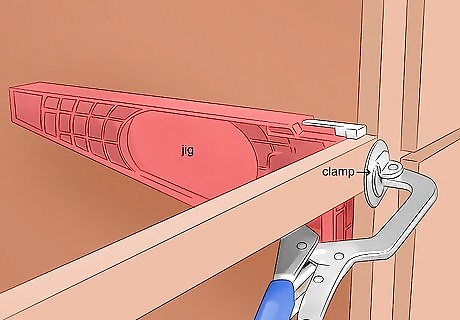
Secure a drawer slide jig to the cabinet. A drawer slide jig helps you position the drawer slides so they're level. Place the jig on the inside of the cabinet so the top of the jig aligns with where you want the bottom of the drawer slide to go. Then, use a clamp to hold the jig in place. Drawer slide jigs work on all types of cabinets, including those without face frames.
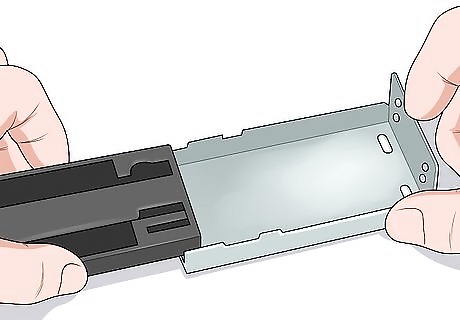
Fit the end cap onto the slide frame and place it at the back of the cabinet. Your slides come with a metal or plastic end cap that secures to the back of the cabinet's interior. Push the end of the sliding frame bracket into the end cap and place it inside the cabinet so the sliding frame bracket rests on top of your drawer slide jig. The jig keeps the sliding frame bracket level, but if you're not using one, you can use a level to check that the bracket is even. If you are using under-mount or center mount slides, place the frame pieces on the cabinet’s bottom.

Screw the end cap and slide frame brackets to the cabinet. Use a power drill to screw the end cap to the back of the cabinet's interior. Each bracket cap should have at least 2 screws. Then, screw the slide frame brackets in place—usually, you'll use 1 or 2 screws to do this. Finally, move the jig and clamp to repeat this for the other side of the drawer. Avoid overtightening the screws or you could damage the cabinet.
Securing the Slides to the Drawer

Move the jig and clamp it so it extends from the front of the cabinet. Position the drawer slide jig so the wide end is flush with the front of the cabinet and the narrow end extends from the front. Clamp it in place so it doesn't slide around on you and pull the inner drawer slides out of the brackets. If your drawer isn't heavy, you might be able to get away with using just 1 jig. However, if the drawer is heavy, it's best to work with 2 jigs.
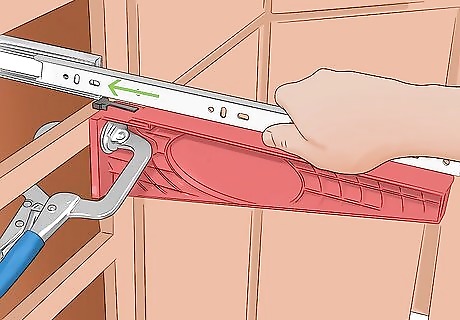
Extend the drawer slides and reinsert the inner slides into the brackets. Pull the drawer slides towards you so that they extend as far as they can go. Then, push the inner slides back into the bracket—depending on the type you have, you might need to push until you hear a slight click.
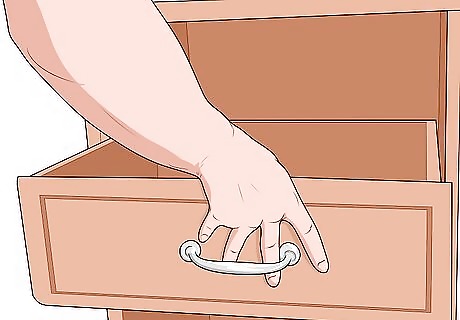
Fit the drawer into the cabinet’s slide frames. Push the drawer in so it rests on the drawer slider jig—don't push the drawer all the way into the cabinet. The slides should be flush against the sides of the drawer. At this point, you can check to see that the drawer glides smoothly. Push the drawer in to see if it comes to a gentle stop within the cabinet. If it does, great—extend the drawer and the drawer slides back out. If it doesn't, re-adjust the drawer slides and try again. If you're attaching under-mount slides, set the drawer onto the drawer slides so the right and left sides of the drawer completely hide the slides.
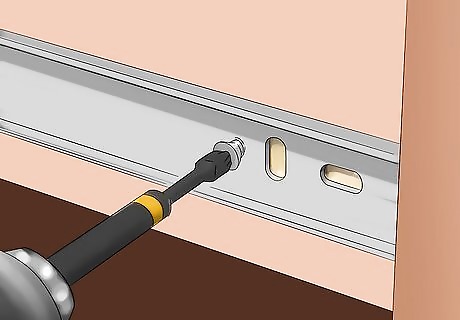
Screw the drawer slides to both sides of the drawer. Place 1 hand inside the drawer and press against it while you drill—this stops the drawer from sliding as you work. In general, drawer slides use 2 screws to attach the brackets to each side of the drawer. Avoid overtightening the screws, or you might drill through the drawer.

Remove the clamp and jig. Now that you screwed the brackets in place, the drawer is secure and you can close it. Test it out a few times and make adjustments as needed.















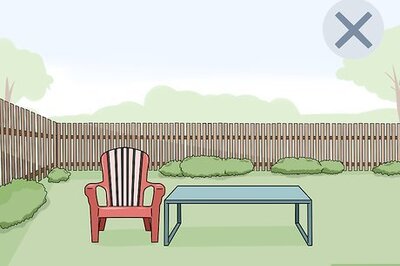


Comments
0 comment